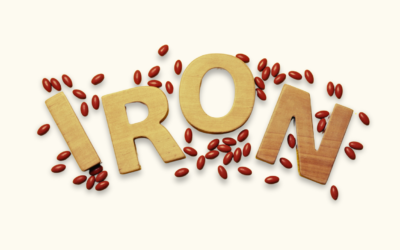MYTH #1: Peanuts allergy is the most common food allergy in young children
FACT: In Australia, egg allergy is the most common food allergy1. The nine most common food allergens are cow’s milk (dairy), egg, peanut, treenuts, sesame, soy, fish, shellfish and wheat.
MYTH #2: Parents should wait until a child is 2 years of age before introduction of common food allergens
FACT: It is recommended that all babies be given common allergy causing foods in an age-appropriate form (eg: smooth pureed) before 12 months of age. Once tolerated it is important to keep these foods in your child’s diet on a regular basis. Delayed introduction has been shown to increase the chances of developing food allergies.1
MYTH #3: Each allergic reaction is worse than the last
FACT: Multiple factors influence severity of any given allergic reaction in a child including dose ingested, form ingested (eg: roasted, baked, raw), exercise, concurrent illness and use of medications. Therefore, allergic reactions do not predictably get worse with each subsequent exposure.2
MYTH #4: Even if you are allergic to a food, one small bite is okay
FACT: Even a small amount of the food allergen has the potential to cause serious reaction. It’s also important to be vigilant about cross-contact from one food to another as this could result in an allergic reaction.
MYTH #5: Children under 2 years of age cannot be tested for food allergies.
FACT: There is no specific age limit for food allergy testing and a qualified Paediatric Allergy Specialist can assess and perform these tests on your child (allergy.org.au has a list of accredited allergists in Australia). Generally, infants under 6 months of age are not commonly given allergy tests.
MYTH #6: The size of skin prick test or level of food specific IgE blood test can predict anaphylaxis
FACT: There is currently no test that can accurately predict if or at what dose of an allergen a child would develop anaphylaxis to a food they are allergic to. A higher result on skin prick test/ Food specific IgE test correlates with an increased likelihood of IgE mediated allergic reaction and is not indicative of the severity of the reaction.3
MYTH #7: Antihistamines or steroids when used early in an allergic reaction can prevent anaphylaxis.
FACT: Neither antihistamines nor steroids prevent progression to or treat anaphylaxis. Their use may result in a delayed administration of Adrenaline which is the best first line treatment for anaphylaxis.4 Non-sedating antihistamine helps with itchiness or hives, however if concerned of anaphylaxis Adrenaline MUST be administered.
MYTH #8: Food allergies can be cured
FACT: Although some food allergies resolve with time, there are currently no scientifically proven cures. In 2020, US FDA approved Palforzia (not approved in Australia), an oral immunotherapy for peanut allergy, which involved exposing the child to increasing amounts of peanut allergen to be continued daily under strict supervised conditions. Follow up research indicates that this could lead to temporary state of desensitisation; however, it has not been shown to lead to permanent tolerance.5
There is no food oral immunotherapy product currently registered by Therapeutic Goods and Administration (TGA) for use in Australia. However, there are multiple research trials that are currently underway to develop treatments for children with severe food allergies. Until then avoidance of confirmed food allergens is recommended.1
MYTH #9: Food intolerances and food allergies are the same
FACT: The simple answer is they are not the same. Food allergy involves an immune mediated reaction to the food which can result in a range of symptoms that can be severe or life threatening. In contrast food intolerance or sensitivities, do not involve the immune system, they predominantly present with gut symptoms and although they can cause discomfort, they are rarely life threatening.
MYTH #10: Children with egg allergy should avoid Influenza vaccine.
FACT: As per ASCIA “There is no evidence that having egg allergy increases the risk of having an allergic reaction to the currently available influenza vaccines.” The influenza vaccine in Australia is derived from influenza virus and grown in hen’s egg. The residual amount of egg protein present in this vaccine is <1 microgram which is substantially lower than the dose required to trigger an allergic reaction. Therefore, people with an egg allergy can receive an influenza vaccine in a primary care facility, such as a GP clinic, where clinic staff are trained to recognise and treat suspected anaphylaxis if this occurs. Observations should occur for 15-20 minutes after vaccination.1
Hope you find these facts useful for your patients.
–
References:
1.https://www.allergy.org.au
2.Nickolls, C. and Campbell, D.E.Food allergy mythbusters. J Paediatr Child Health.2015; 51: 852-856
3.Sicherer SH, Morrow EH, Sampson HA. Dose-response in double-blind, placebo-controlled oral food challenges in children with atopic dermatitis. J Allergy Clin Immunol. 2000 Mar;105(3):582-6.
4.Choo KJ, Simons E, Sheikh A. Glucocorticoids for the treatment of anaphylaxis: Cochrane systematic review. Allergy. 2010 Oct;65(10):1205-11.
5.Whitsel R M et al. Oral immunotherapy: The answer to peanut allergy? Cleveland Clinic Journal of Medicine February 2021, 88 (2) 104-109


